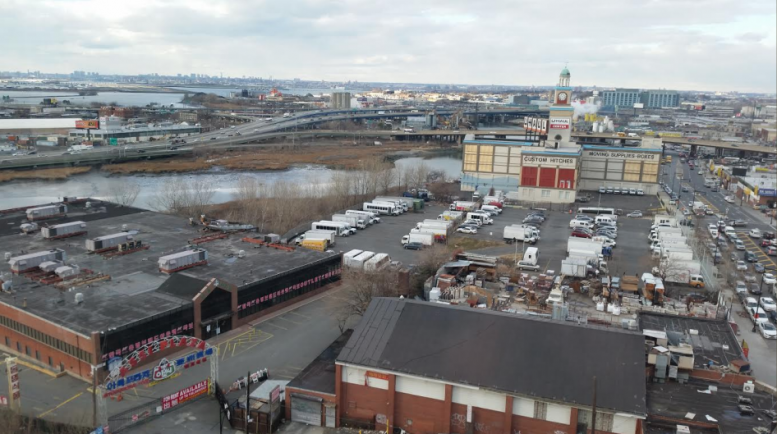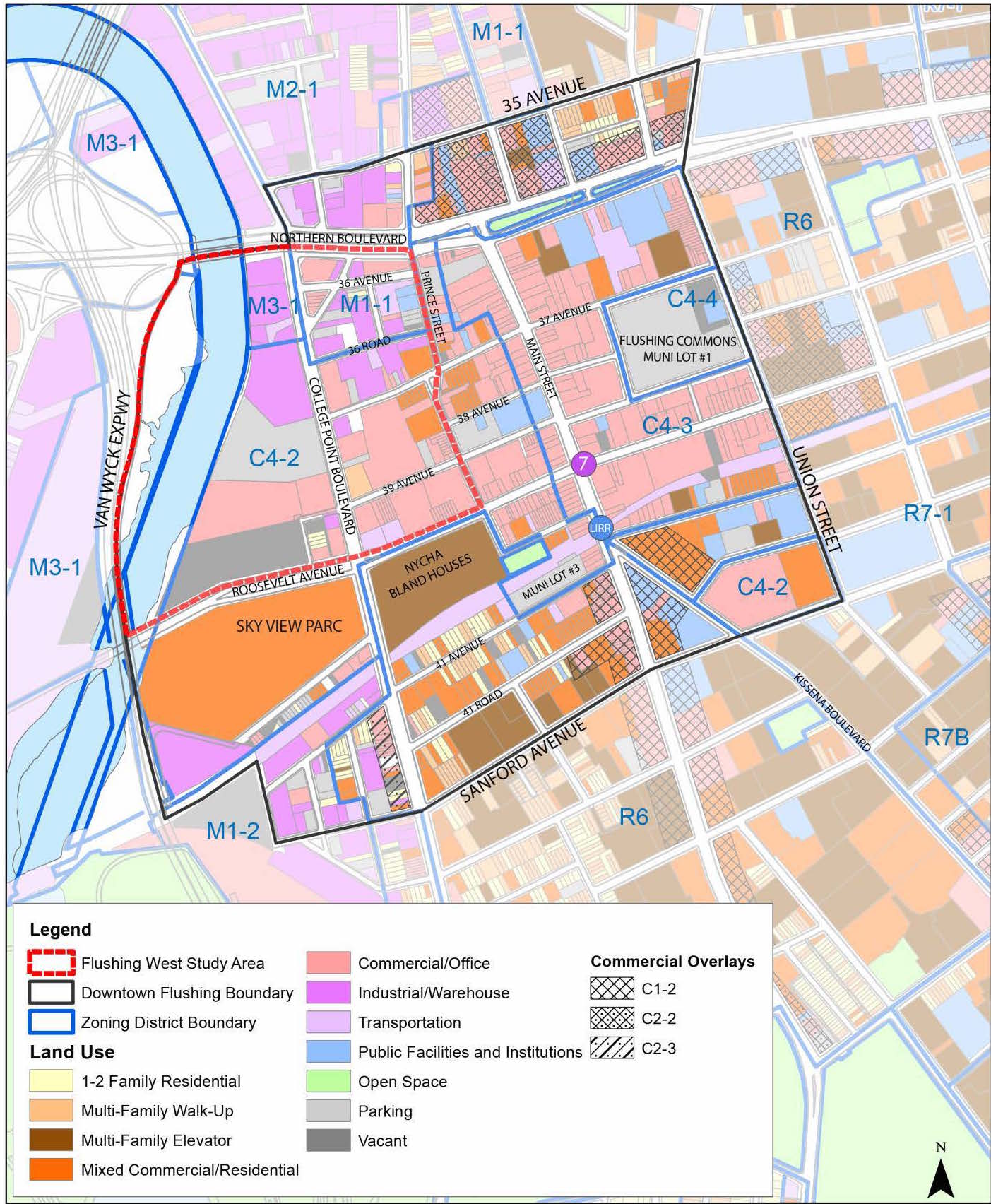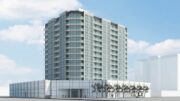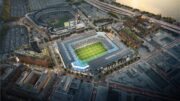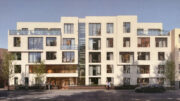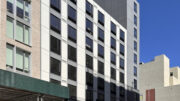As the de Blasio administration walks back its plan to redevelop the auto shops and junkyards in Willets Point, community groups next door in Flushing are fighting their own battle over the city’s plan to upzone a short, heavily polluted swath of industrial waterfront near the end of the 7 train.
The rezoning could produce up to 1,600 new apartments, some of which would count toward the mayor’s ambitious goal of building 80,000 new affordable units by 2024. Although Flushing’s East Asian residents seem to accept new development, they expect better transit and neighborhood amenities in return.
YIMBY attended a City Planning meeting on the rezoning last night, and many locals seemed equally concerned with quality of life issues and affordable housing. Residents want the 7 train extended to College Point or Whitestone, two suburban neighborhoods where buses are the only public transit option. The LIRR once ran service to Whitestone, and offered to sell the right-of-way to the city in the ’20s in order to extend the 7 train (then the BMT-IRT Flushing Line). But the city turned down the offer, and the line was ultimately abandoned.
Still, the Department of Transportation is making a few improvements. They’re installing Select Bus Service lanes for the Q44, which ferries 44,000 people a day between Jamaica, Flushing and the Bronx. Both Flushing and downtown Jamaica will get the express lanes, but politicians who represent the car-dependent neighborhoods in between ensured that they wouldn’t be installed on the rest of the 14-mile route.
DOT is also considering a plan to install sensors and computerized traffic signals in downtown Flushing, which would improve the flow of cars and buses through the hood’s incredibly hectic hub at Roosevelt Avenue and Main Street. The effort, “Flushing in Motion,” would replicate the somewhat successful “Midtown in Motion” system installed a few years ago between 42nd and 57th Streets in Manhattan. Spokespeople for the DOT tell us that the agency has “begun to collect data in the area and expects to complete equipment installation over the next month to improve traffic circulation in Flushing.”
The Long Island Rail Road also has a solid network of tracks linking Eastern Queens and Flushing with Manhattan, but the MTA, hampered by labor costs, can’t run more than two trains an hour during off-peak times. In April, de Blasio proposed upgrading “the Long Island Railroad Atlantic Branch to subway-like service after the completion of East Side Access—including adoption of the subway fare.” But East Side Access won’t be completed until at least 2023. In the meantime, folks in Flushing, Whitestone, College Point and Murray Hill will have to rely on a combination of buses and the 7 train.
Thanks to commuters driving from far-flung areas of Queens and Long Island, residents argue that downtown Flushing has a parking shortage. The city could ease congestion by improving subway, bus and rail service between Flushing and the rest of Queens, but suburban-minded politicians would rather push for more parking.
F&T Group’s Michael Meyer, the developer of the 1.8 million-square-foot Flushing Commons megaproject, told YIMBY last year that political pressure for more parking nearly derailed the project. “We prevailed at Flushing Commons, but we almost died because of the bias for parking,” he said at the time. “A huge threat to enlightened development is the attitude that people have towards parking and the misconceptions people have about parking, which is unfortunately enabled by local politicians who sort of support it.”
But transit isn’t the only major issue in Flushing. Attendees at last night’s meeting also clamored for more parks, public plazas and street trees. One young Chinese woman said, “There are so many Chinese living in Flushing, but no feeling of Chinese gardens.”
Others added that cities in China usually have a public open square where people can walk, dance, sing, or exercise as a group, and they would love to see even a small public square like the one at the Confucius Plaza apartment complex in the Lower East Side.
Fortunately, City Planning has included open space in their plans to rezone the waterfront. Any developer who builds on the industrial sites next to Flushing Creek will be required to clean them up, and they’ll have to include publicly accessible green space that links downtown with the waterfront. Going forward, planning officials hope to begin the rezoning and land use review process for Flushing West next spring, and tentatively aim to finish by the end of 2016.
Subscribe to YIMBY’s daily e-mail
Follow YIMBYgram for real-time photo updates
Like YIMBY on Facebook
Follow YIMBY’s Twitter for the latest in YIMBYnews

